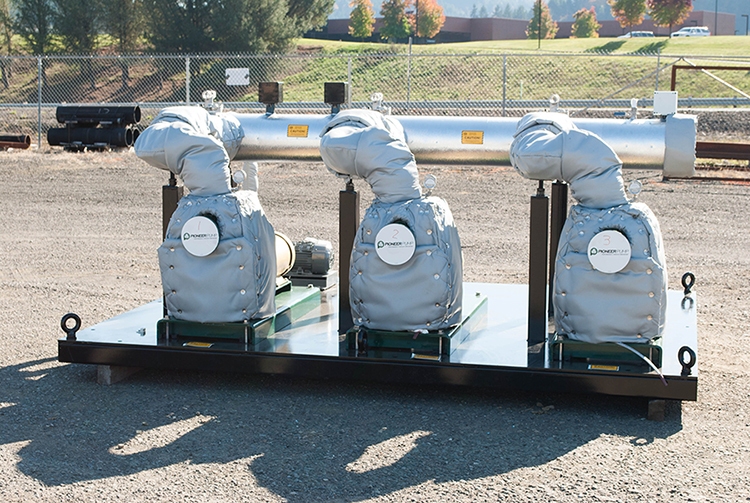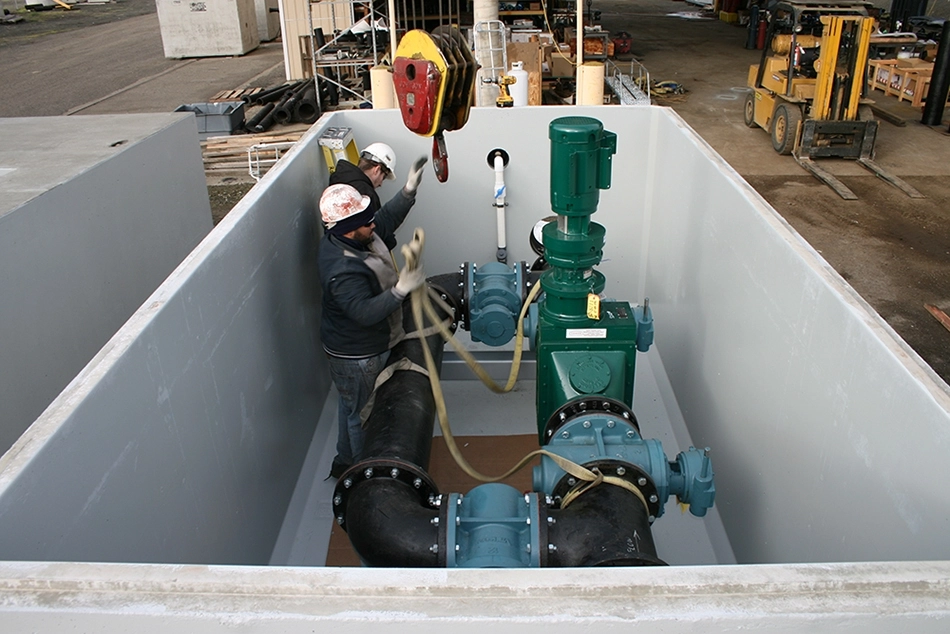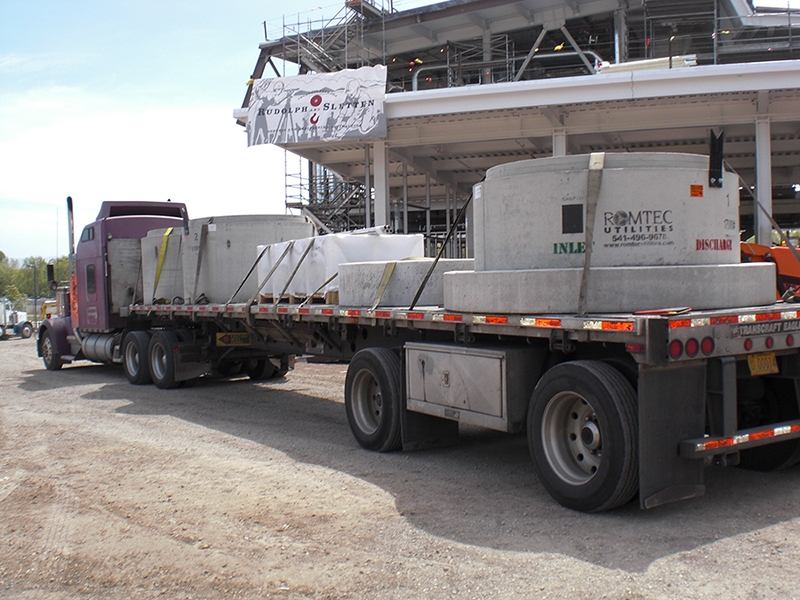
Two weeks ago, we posted a blog saying that Romtec Utilities designs and manufactures all types of site-specific packaged pump stations, but what does this term really mean? For people who have never worked on a pump station project, this term can appear contradictory and confusing. The reason for this is because Romtec Utilities provides a different offering for pumping systems than most people are familiar with. Romtec Utilities can handle any aspect of a pump station design and provide the structural, mechanical, electrical, and communication components needed in a single package with complete design and construction documentation.
When Romtec Utilities begins a pump station project, we first begin by collecting all of the design criteria from the engineer, owner, contractor, or developer. This criteria describes site-specific conditions such as the depth of the inlet line (or invert in), expected flow, peaking factor, required pumping rate, total dynamic head (TDH), and more. Additionally, Romtec Utilities collects information on owner preferences, which can be very strict to non-existent. These preferences are for design details such as the type or brand of pumps, electrical controls, level sensing devices, fiberglass or concrete, and other similar considerations.
Using all of the design criteria, Romtec Utilities engineers the pumping system to meet the criteria. The entire design is documented in a submittal to show the elevation drawings, product specifications, scope of supply and work, site plans, and other details of the design. Put simply, our engineers create a document to show how our design meets all of the site specific design criteria that was provided. The submittal document is then reviewed and approved by the project engineer, owner, municipality, or an outside reviewing agency. This process ensures a design that is tailored specifically to the sole application specified by the customer.

Romtec Utilities uses the approved design to begin manufacturing the pump station package. Using our extensive knowledge and experience with a lot of national vendors, we get the exact components required to meet the approved design. Romtec Utilities has no partnership or affiliation with any single brand or manufacturer. We work hard through every project to get the required components supplied within our customer’s budget and schedule. This process allows our manufacturing staff to fabricate and assemble the pump station package for delivery.
The package that arrives onsite will contain all of the components specified in the submittal documents. Additionally, the submittal document will define all of the necessary installation equipment and accessories that will be supplied by the contractor and/or owner. With this package and the accompanying documentation, the complete pumping system can be installed quickly and will meet all of the site requirements. This is the typical description of a site-specific packaged pump station.

An additional benefit of this approach is that it works well for special circumstances and requirements. For example, what do you do if only a portion of the pumping system is needed? This is common when repairing or retrofitting an existing system. Some pieces need to be replaced; some can be retained. Another common scenario is when a pump station owner wants to add a metering vault to an existing system. No matter what the scenario is, the procedure that Romtec Utilities provides is essentially the same.
- Collect all the Design Criteria
- Engineer a Design and Submittal
- Get the Submittal Approved
- Manufacture the Package
- Deliver the Package
With this approach, the customer gets proof before any money is spent that they will get a solution to their pumping scenario. With Romtec Utilities, a package pump station is not some one-size-fits-all, off-the-shelf kit, but rather an engineered system designed, manufactured, and delivered to meet the particular needs of a specific site. Contact our sales staff to learn how our packaged approach can benefit your pumping project in wastewater, stormwater, industrial water, and clean water.
